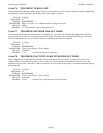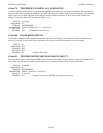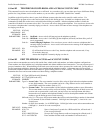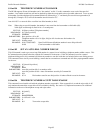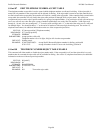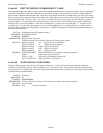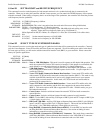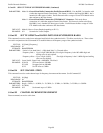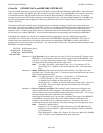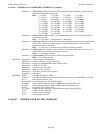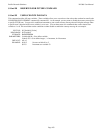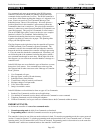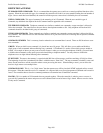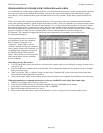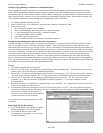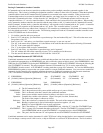
Pacific Research Solutions RI-300e User Manual
Page 100
S-Cmd 96 GENERIC DATA and DHE RBI-1 INTERFACE
This S-Command allows direct control of Generic Data Radios and the Doug Hall Electronics (DHE) RBI-1. Pacific Research
offers a range of Vertex FTL Mobile radios that conforms to this data format. Also, the DHE RBI-1 can be used to control up
to four Kenwood series TM-XX1 mobile radios from the Pacific Research RBI-3 or VXR-5000 ACC port. For detailed
information on the Vertex FTL Mobiles supported, contact Pacific Research. For more detailed information on the RBI-1 and
the radio model numbers that are supported, contact Doug Hall Electronics at 815 E. Hudson Street, Columbus, Ohio 43211
(Tel 614-261-8871).
The functions within this command can be integrated into user commands and macros to build a user custom remote base
application. You will need to enable S-Command 92 mode 8 or 9 to enable the DHE functions in this command or mode 10 or
11 to enable the Generic Data Radio functions. You can also use S-Command 93 to set the band limits when using direct
frequency control. All other remote base frequency S-Commands, other than S-Command 96, are not used with this feature.
See the section on “Linking, DHE RBI-1” for more detailed information on programming and controlling the DHE RBI-1.
Throughout this command, any values that are modified using the programming software or during the programming
(un-locked) mode, will be used as the power on default mode of the DHE RBI-1 and Generic Data Radio. This power on
default mode occurs when power is first applied to the controller and assuming the DHE RBI-1 or Generic Data Radio is
powered before or at the same time as the controller. Any values modified with a macro will effect the runtime operation of the
DHE RBI-1 or Generic Data Radio.
SYNTAX: 96 [Parameter] [Data]
READ BACK: 96 [Parameter]
STOREAGE: RAM/EEPROM
PARAMETERS:
Parameter 0 =
(
User Function
)
Used to control any one of the 8 or all User Function (UF) outputs on the
DHE RBI-1. You will find the connector for these outputs labeled “EXPANSION” on the
real panel. Two digits follow this parameter value. The first digit (value 1-8) selects the
UF output and the second digit will turn the output on/off.
Data
Two digits, first digit 0 = write binary value, 1 to 8 = User Function (UF-X).
Second digit 0 to 1 = Off/On. 0 will set the output low and 1 will set the output
high.
Parameter 1 =
(
Radio Functions
)
Used to turn on/off various radio functions. Two digits follow this
parameter value. The first digit (value 1-7) selects the actual radio function and the second
digit will turn the function on/off.
Data
= Two digits, first digit 1 = Receiver, 2 = Transmitter, 3 = CTCSS Encode,
4 = CTCSS Decode, 5 = Scan (only available on some radios),
6 = Squelch (only available on some radios) and 7 = Power.
Second digit 0 to 1 = Off/On. 0 will turn off the above function and 1 will turn on
the function. If the second digit is not sent, the controller will read back the
current default value.
Parameter 2 =
(
Receive Frequency and Offset
)
This function is used to set the receive frequency and
transmit offset from the receive frequency. The transmit offset value is optional, as the
receive frequency can be entered without changing the previous offset value. You can also
enter the transmit offset value without the receive frequency.
In the Generic Data Radio mode, you can enter a frequency in the range of 0 to 009999 (0
to 9.999MHz) to setup the radios offset value. Offset frequency values and receive
frequency value should not be set within the same macro. You need to wait at least 1
second after setting the offset frequency value before setting any receive frequency values.
Data
[Frequency] <Offset> where:
Frequency = Up to 8 digits, First digit of frequency is the 100s MHz digit and
trailing zeros are not required. Upper and Lower frequency limits are controlled
by S-Command 93.
Offset (Optional) #1 = Minus, #2 = Simplex, #3 = Plus, #4 = Minus 20 (1200MHz
only). The offset value is dependent on the radio being used.



